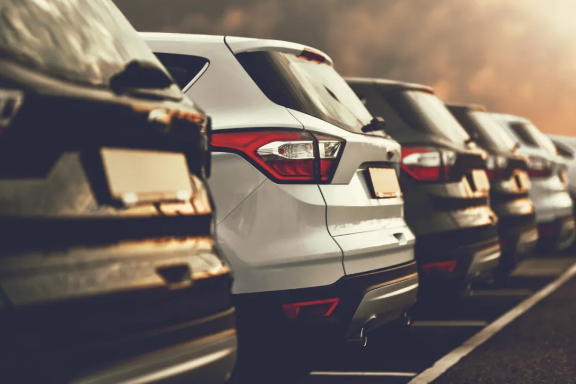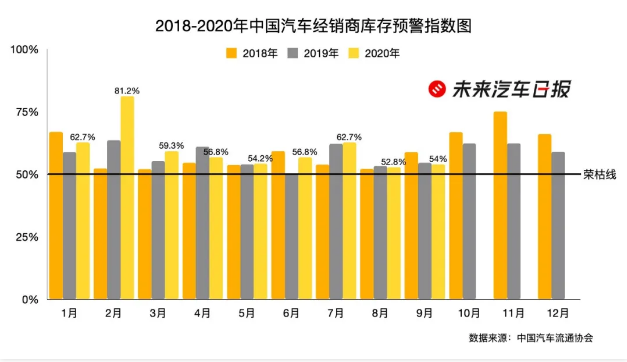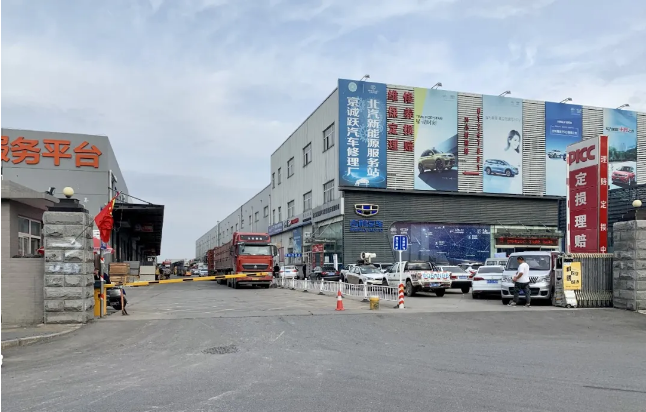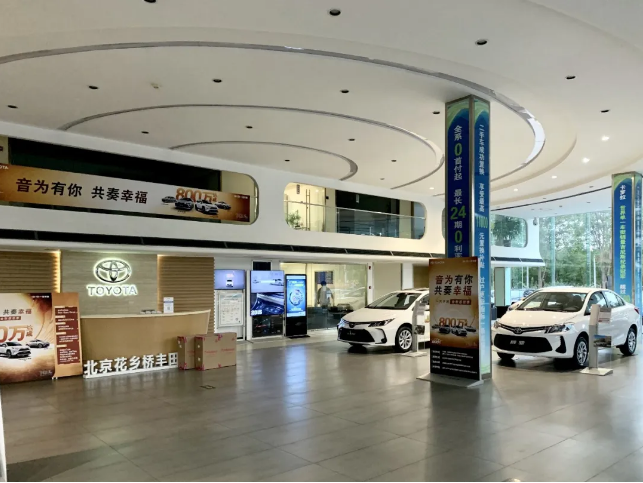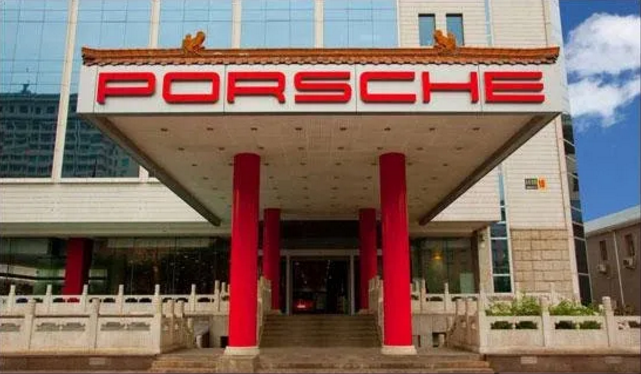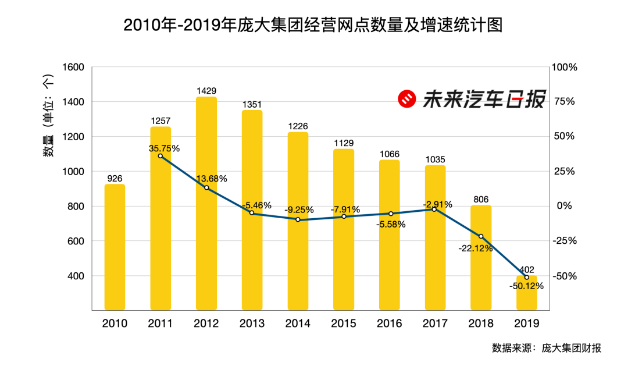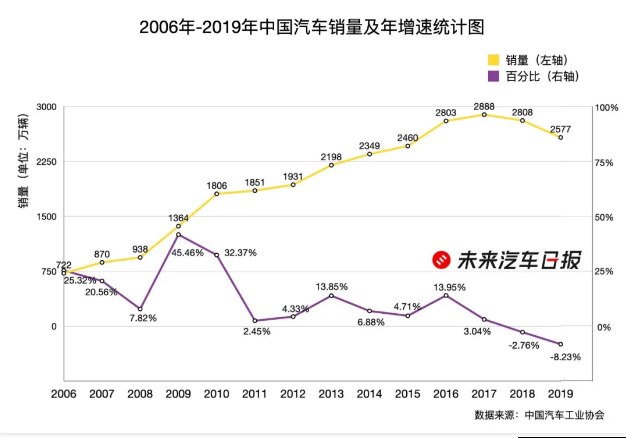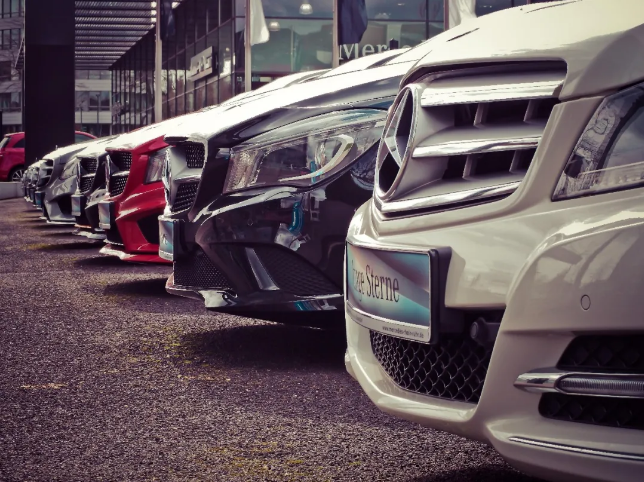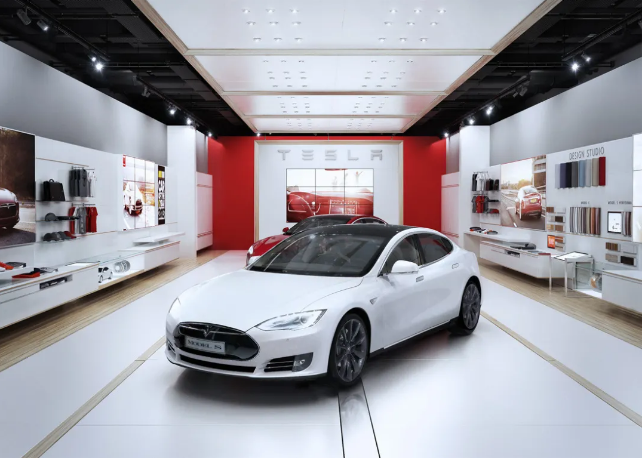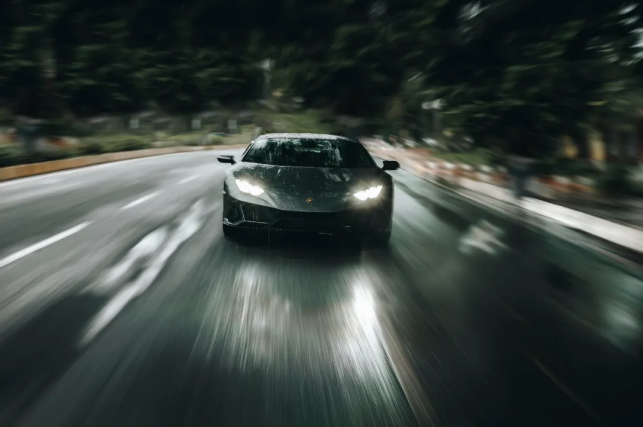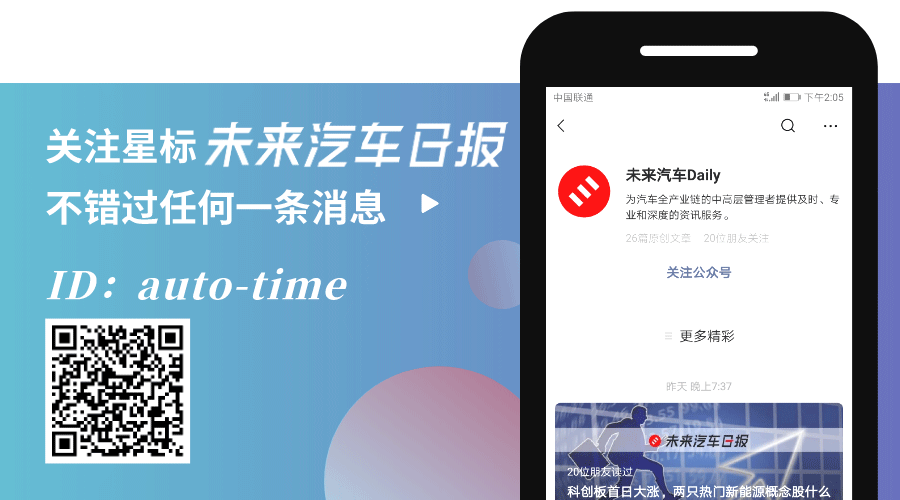The era of “Lying Earn” has passed. Editor’s note: This article is from ”
future car Daily “(micro-channel public number ID: auto-time), Author: Su Peng.
Cover image source: IC photo
Author | Zhang Yi Su Peng
Edit | Traveling around
If you open the door to do business, you are most afraid that no one will care.
At 2 pm on August 12th, Shen Hua, who was planning to change his car, came to see the car at Dongfang Jiye Automobile City near the East Fifth Ring Road in Beijing, but unexpectedly found that apart from him, there was “no one who bought a car.”
This is an American brand 4S store covering an area of about 2,000 square meters. The store is empty. Young salespeople get together to chat and pass the time. When Shen Hua asked for a test drive, the salesmen couldn’t take much interest. They evaded that the test drive was under maintenance and there was traffic jam nearby, so they refused his request.
“They don’t think the deal can be done.” Shen Hua told Future Auto Daily confidently. He came to Yaojiayuan to watch a car about a year ago, and at that time the store was in a different situation. “At that time, the store was full of people (to see the car), and I didn’t want to find a seat to rest.”
In just one year, it was “different from two stores”.
“I can’t live anymore and I’m looking for new opportunities.” Wang Hao, a post-90s salesman, has been working in an automobile dealership in Guangzhou for almost 2 years. “Now there are only 3 sales in the store. There are 7 or 8″. Wang Hao, with a basic salary of 2,000 yuan and doing his best, can only sell one car a month at most. “There is a 4S shop nearby, and a lot of sales have been opened a while ago.”
The once bustling auto market seems to have really changed. 2020 started with an epidemic, the global auto industry has slipped into a trough, and the frozen auto market has caused dealers to suffer. Statistics from the China Automobile Dealers Association (hereinafter referred to as the “Distributors Association”) show that from January to September this year, China’s auto dealer inventory warning index was higher than the 50% decline line for 9 consecutive months, reaching a maximum of 81.2%. Dealers are under pressure obvious.
Future car daily report drawing
Under pressure is elimination. According to statistics from the Circulation Association, in the first half of this year, 1019 4S stores have retired from the network, and nearly 30,000 dealers, only 21.5% have achieved sales growth, and less than 30% of profitable dealers.
Not only does the tail dealer have a hard time. Zhengtong Auto and Rundong Auto, which once ranked among the top 100 dealership groups, also encountered a financial crisis and were on the verge of bankruptcy and liquidation.
“When the wind comes, pigs will fly. When the wind stops, a bunch of pigs will fall to death.” Practitioners tacitly: Unlike the setbacks they have encountered before, the current crisis is fatal. of.
Outside the Fifth Ring Road, a glimpse of the real auto market
Jingnan Automobile Park, located outside Beijing’s South Sixth Ring Road, is very remote and has no access within 5 kilometers Metro in the downtown area. Jingnan Automobile Park is also 5.8 kilometers away from the nearest Yinghai Metro Station in a straight line. After 6:30 in the evening, you will not be able to get back to the city without a fare increase.
The side entrance of Jingnan Automobile Park located at the South Sixth Ring Road in Beijing. Photo by Future Car Daily
Although the area is not large, the Jingnan Automobile Park gathers many dealership stores of many brands, including Jingcheng Yue Automobile, which acts as an agent for Geely, and sales of BMW, Mercedes-Benz, Audi, Volkswagen, Volvo, Weimar, etc. Zhongcheng Auto of the brand.
Beijing Huaxiangqiao Toyota 4S shop Daxing branch is also here. Not long ago, the main store on Huaxiang Bridge on the edge of the Fourth Ring Road was forced to close. The business of this Toyota 4S store was merged to this branch away from the city.
“Land prices have risen quite sharply every year, and rental costs account for a large part of the 4S store’s expenses, at least 30%-40%.” A sales manager of the store who has sold cars for more than 10 years told the future Auto Daily, not this yearDue to rent pressure, fewer 4S stores moved from the center of the city to outside the fifth ring road, a very remote location.
The days after the relocation were visible to the naked eye. During the whole afternoon of Future Auto Daily’s visit, there was no consumer who came to inquire about buying a car. The above-mentioned salesperson said that since the beginning of this year, the number of people visiting the store to see cars has been significantly reduced. Even after the epidemic eased, the number of people visiting the store to see cars has not returned to last year’s level.
Beijing Huaxiangqiao Toyota Motor Sales Company Daxing Branch Photographed by Future Car Daily
This year, the car is really hard to sell. According to data from the China Association of Automobile Manufacturers, in the first half of 2020, the nation’s total sales of automobiles totaled 10.256.9 million, a year-on-year decrease of 16.91%. Among them, passenger cars dropped by 22.42% year-on-year, and only 7,872,500 were sold.
The dealer nearest to the gunfire is at the outpost of the fall. According to data from the Distribution Association, in the first half of this year, the overall gross profit rate of new cars in the automotive industry dropped to -3.5%, and dealer sales revenue was only 37.6% of the full year of 2019. Among them, over 80% (83.7%) of dealers have experienced price inversions, which is a further increase from 79.9% in 2019.
This means that from the perspective of sales revenue alone, the more dealers sell, the more they lose. Thousands of dealers who couldn’t stand the pressure have withdrawn from the internet one after another, or the idea of quitting has emerged, Zhou Zheng is one of them.
“The store is too expensive. The epidemic lasted for a few months. The rent was dry, and the rent for 8 months (rent) was as high as 700,000. There are two brothers in my store.” Chatting with Future Auto Daily In his own dilemma, 36-year-old Zhou Zheng has a sad face.
In 2013, after Douteng used a second-hand car to lose a lot of money, he bought a second-level dealership covering an area of more than 700 square meters in Daxing District, Beijing. Now he can’t open it anymore.
Help car companies sell cars, a hidden gold mine< /span>
The timeline is drawn back to the 1990s. Cars are still luxury goods in China, and the concepts of car dealers and 4S shops have not appeared. The hidden gold mine of “helping car companies sell cars” has also not been discovered.
Industry insiders told Future Auto Daily that before the dealer group is really established, it is the auto repair shops in various places that are reluctant to act as the dealers. The auto companies will send people to the auto repair shops to guide the sales staff to repair the cars and replace the parts. Parts etc. “At that time, there were very few people who could afford a car, mainly for corporate purchases.”
Later, some of the auto repair shops that have been cooperating with the OEMs put up the “Special Auto Repair Station of a certain car brand” sign at the door and became the earliest dealers.
The brand can’t be put up casually. “(Application) will cost hundreds of thousands of yuan.” Xu Kai, who once worked at a certain “General Motors Service Station” in Beijing, told Future Auto Daily.
The “oil and water” of the repair station is very rich. “At that time, the wage earners (car repairers) in the repair station often gave bonuses. Everyone secretly stuffed the red envelopes under the bedding for others to see. It was a thick pile,” Xu Kai recalled, “It was the most important thing in China’s auto industry. Good time”.
Luxury car brands such as Mercedes-Benz and BMW have also gradually expanded their tentacles into China since the 1990s. At that time, consumers who could afford these cars were basically concentrated in first-tier cities such as Beijing, Shanghai, Guangzhou. Agents in these cities can often be directly authorized by the general agent of luxury brands in China.
In February 2001, the first Porsche Center in Mainland China opened on Chang’an Street in Beijing, marking Porsche’s official entry into the Chinese market. The driving force behind is the Porsche dealer Jebsen Group.
Porsche Centre Beijing Changan Source: Porsche China
From 2001 to 2007, Jebsen’s sales accounted for almost 100% of Porsche China’s total sales. There are rumors that the original name of Porsche, whether it is read in German or English, is pronounced as “Bao Shi” and not “Jie”, and the Chinese name of Porsche “Jie” is taken from the Jebsen Group, which shows its importance.
The first decade of the 21st century is a decade of rapid development of the Chinese automobile market. Car sales rose from 2 million in 2000 to 18.061,900 in 2010. Dealers who represent major car brands also make a lot of money.
“At the most glorious time, open a dealership and earn a profit.” Insiders told Future Auto Daily that around 2010, if you want to invest in a luxury brand dealership, dealers need to prepare at least 200 million yuan. The principal, but the payback period generally only takes half a year, and it can even be shortened to 3 months at the fastest, and then it is a net profit.
It is also common for consumers to increase prices to buy cars. Industry insiders recalled that around 2010, hot-selling models such as Audi A4, Audi A6, and BMW 5 Series were hard to find. The maximum price increase could exceed 15%, and all the profits belonged to the dealers.
This is a golden age everywhere, and it reaches its peak with the listing of the huge group. On April 28, 2011, as the first auto dealer to land on A-shares, on the first day of trading, Da Da Group ranked first among auto dealers in the world with a market value of 51.744 billion yuan.
Zhao Junhui, a person from the main engine factory who visited Pangda’s Tangshan headquarters around 2011, told Future Auto Daily (ID: auto-time) that the huge sales staff “the most obvious feeling is that they are rich and powerful.”
Although nearly ten years have passed, Zhao Junhui still remembers the scene at that time: At a dinner of more than ten people, a huge sales person with a big golden chain hanging from his neck, patted his chest and said, ” There are no customers that we can’t handle”, with a loud voice.
This statement is true. At that time, Pangda had already won the agency rights of high-end brands such as Jaguar Land Rover, Mercedes-Benz, BMW, Volvo, etc. in the Chinese multi-regional market, and the limelight was no different.
Expand! At any cost
The dealers make a lot of money as a hindsight. If you want to get on this ship, you have to buy tickets and pay tuition.
Zhang Nan, who was in charge of dealer management for a German luxury brand manufacturer, told Future Auto Daily that in the heyday (around 2012), dealers wanted to obtain authorization for a luxury brand store, and they needed to pay the “PR cost”More than 10 million yuan (excluding the cost of establishing stores and training employees). Some car companies also require dealers to have government resources, which is also one of the mandatory conditions for joining.
In addition, some manufacturers also require dealer investors to own multiple plots of land in the city where they apply for authorization to open a store, and there are fixed requirements for the area of each plot. Finally, the manufacturer selects a piece of land to open a shop based on the traffic and passenger flow in the vicinity.
“Car companies can really be so prosperous when they are at their best. These are the most basic requirements.” In the words, Zhang Nan expressed feelings about that golden age from time to time.
Dealers generally need to reserve about 1.5 months of inventory before opening a store. After the manufacturer assigns these cars to the dealer, the latter needs to deposit the money to the designated account as soon as possible after receiving the notice. A person familiar with the OEM’s online distribution (dealer network development) process told Future Auto Daily that some manufacturers are very demanding and require dealers to pay in full within 3-5 working days after receiving the email.
Although there is a lot of pressure, for dealers, getting the authorization to open a store is equivalent to getting the golden key to unlock the treasure house of wealth. Under the temptation of “Qian Jing”, dealer owners spend as much money and accept any grievance as long as the store can be opened.
In order to dilute the expenses and grab more benefits, the major dealer groups began to expand their stores frantically, striving to win more auto brand agency rights, thus forming a monopoly on the regional market.
Data shows that in 2011, Zhongsheng Group nearly doubled the number of stores opened within one year after its listing; as of the end of 2011, the number of Padaw Group’s 4S stores and distribution outlets were 661 and 1,257 respectively. At the end of 2012, these two numbers soared to 754 and 1,429; in 2012, Guanghui Automobile also added 115 4S stores to 394, which is close to 40% within a year.
Future car daily report drawing
On the other hand, the auto market continues to rise, and manufacturers increase sales targets every year. This also forces dealers to open more stores and cover car sales to a wider market. However, since 2012, dealers are unwilling to continue to open stores, and manufacturers are seeking to open stores.
Since then, the market trend has quietly changed. In contrast to the rapid increase in the number of dealership stores, the growth rate of car sales has slowed sharply. According to data from the China Automobile Association, in 2011, China achieved 18.419 million automobile production and sales and 1850.There were 510,000 vehicles, a slight increase of 0.84% and 2.45% year-on-year, respectively, and the increase was 31.6 percentage points and 29.92 percentage points lower than the previous year.
Future car daily report drawing
The store opened more and more, but the car couldn’t sell. The dealer groups, including Dahua, have hidden worries at the same time, and they have formed a giant network due to tight funds, and dealers cannot escape.
It’s as huge as “huge”, and there will be a day of falling down
The inflection point soon appeared.
At the beginning of 2012, the Mercedes-Benz S-Class with a manufacturer’s guide price of 930,000 yuan was promoted by the official price cuts. The entire system offered a discount of 200,000 yuan. Mercedes-Benz C-Class.
The crazy price cut is to quickly digest the backlog. Car companies that are aware of the crisis have launched a “dealer’s survey action”—checking the dealer’s real inventory, so as to pierce the “false bubble” of sales data and set more rational sales targets.
However, the later plot showed that no one of the OEMs and dealers who took the high-speed trains in the car city wanted to slow down the pace of making money, and the entire industry continued to run blindly.
Source: Pexels
In order to encourage dealers to sell cars, manufacturers have set up various rebate policies and incentive schemes with different gradients. Generally speaking, a dealer 100% of the annual sales target can get about 1-2 points (1%-2%) of the batch sales amount (the cost of the car approved by the manufacturer).
In a time, completing the sales target and getting rebates became the most important thing. Dealers start mass batching of cars, if the manufacturer sets the salesThe target is 100 vehicles. The dealer will set a higher sales target and negotiate with the manufacturer to get a lower wholesale price.
In the beginning, when selling cars, the dealers earned the “price difference between purchase and sale.” For example, a dealer buys a car with a guide price of 1 million yuan from the manufacturer at a discounted price of 5%, and then sells it for 1 million yuan, earning an “income-sale difference” of 50,000 yuan per car.
However, as the dealers’ trend of “selling sales and price wars” intensified, the “income-sale gap” continued to shrink.
“Sales and after-sales account for the bulk of dealers’ profits. Starting from about 2011, the profit contribution from selling cars has been decreasing year by year, while the percentage of profits from manufacturers’ rebates has been increasing year by year. By 2015, dealerships were in sales. The profits basically depend on manufacturers’ rebates, and some stores can even account for 100%.” Zhang Nan recalled the Future Auto Daily, “selling cars does not make money, all depends on manufacturers’ rebates.”
Under the almost crazy market sentiment, the risks are gradually exposed. Some dealerships with extremely tight cash flow may not be able to sustain it anymore, but they still take the risk and continue to lend more money and grant more cars.
“Everyone bet on the manufacturer’s sales rebate, and then use the rebate to make up for the loss”, an insider familiar with this set of operations told Future Auto Daily.
The dealer will do everything possible to rush up the volume, even if it uses an “oversold” method-the unsold car will first issue an invoice, the above-mentioned person disclosed. “As long as the information is entered and the system determines that the car is sold, it can be included in the performance and the dealership can get the rebate.”
Gambling is doomed to win and lose. Unfortunately, most gambling loses. In 2018, China’s automobile consumer market saw its first decline in 20 years. The sales data of auto companies has taken a turn for the worse, and dealers have tasted bitter results.
In 2018, due to the tight capital chain, Pangda Group was forced to transfer its 15 4S stores, of which 5 were Mercedes-Benz 4S stores, and the latter paid 1.253 billion yuan for Pangda Group. The transferred 4S shop is not unprofitable. Its total net profit in 2017 reached 110 million yuan, accounting for half of the net profit of the huge group.
At the beginning of 2019, Da Da issued a performance forecast, stating that the company’s net profit attributable to shareholders of listed companies in 2018 is expected to be a loss of 6 billion to 6.5 billion yuan. In response to an inquiry from the Shanghai Stock Exchange, Da Da said that the loss was due to the company’s eagerness to clean up inventory and discount sales; and that the purchase of new cars did not meet the standard and could not receive all the preferential policies of the manufacturer.
Future car daily report drawing
In the end, the Dao Group finally embarked on the road of bankruptcy and reorganization because the debt of 17 million yuan was not yet paid.
As soon as the news came out, the entire dealership industry fell silent. In 2019, 57.6% of dealers had an inventory coefficient above the 1.5 warning line; 4% of dealers had an inventory coefficient of more than 3, which was a serious excess.
When the direct operation mode comes knocking on the door
For dealers who represent traditional car brands, there are internal and external problems.
Data shows that from January to September this year, Weilai Automobile delivered a total of 26,375 vehicles, of which 4708 vehicles were delivered in September, an increase of 133.2% year-on-year. The deliveries of Ideal Motors and Xiaopeng Motors also reached new highs in September, reaching 3504 and 3478 vehicles respectively. And Tesla’s monthly sales in the Chinese market have stabilized at the level of 10,000 vehicles.
The strong sales growth of new-built car companies has robbed many of the shares of traditional brands. Unlike the latter, the new forces mostly advocate the direct sales model.
For a long time, China’s automobile distribution market has been implementing an “authorized sales” system, and OEMs are strongly bound with authorized 4S stores. It is difficult for non-authorized market entities to enter the automobile distribution market. Under this relatively closed channel system, dealers have been labeled with negative labels such as “increasing prices and raising cars,” “mandatory binding sales,” and “poor after-sales service”.
The new forces represented by Tesla have stood on the opposite side of this model. As early as 2008, Tesla opened its first direct store in the United States.
According to CEO Elon Musk’s vision, Tesla can directly face-to-face with consumers through its directly-operated stores, thereby eliminating the information asymmetry in the traditional dealership model. Consumers no longer need to bargain with sellers, and as the sole seller, the car company not only has the initiative to adjust prices (not affected by dealer factors), but will also gain greater profit margins.
Tesla Direct Store Source: Pinterest
This model is sought after by a number of Chinese new car companies such as Weilai, Xiaopeng, and Weimar. Among them, NIO, who is good at user operations, has made the service a feature of the experience store.
Lin Lei is an employee of a new car manufacturer in China. Not long ago, he “admiredly” went to the NIO House in Shanghai Xingye Taikoo Hui to experience it. He was quite excited to describe to the Future Automobile Daily that the service that NIO sells is “very enthusiastic” and that he can drink coffee for free when he comes to the store, “coffee and garland”. What surprised him even more was that after the test drive, he would be given a car model. Compared with the experience of his own company’s direct store, Weilai made him “flattered.”
NIO FE team car model Photo courtesy of interviewee
Analyzed by Essence Securities, this direct sales model bypasses middlemen, directly obtains customer data and feedback, and adjusts products in a timely manner to make them more suitable for customer needs, which can improve product competitiveness and enhance users’ brand awareness Recognition. In terms of car models, the direct sales model “pay first and deliver later” not only effectively reduces the cost pressure caused by vehicle inventory, but also eases part of the funding pressure.
Traditional OEMs are not indifferent, they have also made corresponding changes. In July of this year, the Buick electric vehicle business under SAIC GM has started direct operation. Consumers use the Buick iBuick APP to watch, order, and pay for cars online, and dealers will then provide users with test rides, test drives, and after-sales maintenance. service.
Volkswagen Group has also innovated in the sales method of electric vehicles. In May of this year, the Volkswagen Group announced that dealers will no longer be the main sales point of ID. series electric vehicles, and that this series of vehicles will focus more on online sales-users place orders online, and dealers are responsible for providing sales consultation and testing. Work such as driving test rides, transaction processing, and vehicle handover.
This kind of change is not easy. Not only will dealers instinctively reject and put pressure on manufacturers, but many OEM employees are also very resistant to the direct sales model. A partner of the OEM’s network development department said that the new retail system such as direct sales directly affects the OEM’s network development department, which may be optimized and reorganized. “This is equivalent to directly cutting off people’s financial channels.”
But whether you like it or not, the knock on the door of the “Barbarian” has already sounded, and a wave of reshuffle is kicking off.
Do we still need distributors in the future?
In order to survive, dealers began to change their methods to find a way out. The “savage growth” of the fourth- and fifth-tier cities has become a good friend of some 4S stores.
Different from the sales model of 4S stores, there are many “wild” ways to purchase goods in Auto Trade City. They often do not have the formal authorization of car companies. The source of cars is mainly to buy cars from 4S stores in batches and send “scalpers” to various regions to adjust the goods. There are many unknown second-hand cars and refurbished cars.
“We will sell those stock cars and cars with unpopular colors to Qimao City in bulk. Of course, our wholesale price for Qimao City is also lower than the market price.”Hebei The sales manager of a Honda 4S store in Baoding revealed to Future Auto Daily. There are few 4S stores in the fourth and fifth tier cities, and families with limited consumption levels will use Qimao City as their first choice for car purchase.
In addition to “asking for directions” Auto Trade City, “precise and detailed” single-store operation has also become a way of thinking for some dealers to transform.
Unlike the large-scale expansion of dealer groups, single-store operation means that an investor opens one store or a few stores. Usually, the boss of a single store can directly communicate with the manufacturer. If the car sells well, they will have a greater say in negotiations with the manufacturer, and they will have a stronger self-driving force in business.
A real case learned by Future Automobile Daily is that a single-store dealer located in a third-tier city in the south will never have more than 3 sales consultants in the shop at the same time. Employees freely arrange their time in the store according to the shift system, and most of the time they run outside, going deep into the countryside to open up users. The boss’s method of motivating employees is also very “simple and rude”: The store and the sales manager will give the rebate bonus they receive and give part of the reward to the sales consultant.
Under the influence of volume, the single-store model can only stay in the stage of “small and beautiful”. The group dealers who occupy most of the market have an unclear path to transformation.
Source: Pexels
Is direct sales the future? Will the dealer disappear? Future Auto Daily posed these two questions to all interviewees, but the answers they got were quite different.
Some people have a firm attitude: “The traditional dealer model is not working, and direct sales are the trend”; but some people firmly believe”Distributors cannot be avoided”, the reason is that there are huge differences in the markets of different regions, and it is difficult for a OEM to take care of all aspects. It will take at least one year for culture and circle to build trust.”
Building trust with potential customers is one of the best things Gao Guo does. As a senior sales manager with more than ten years of experience in the industry and serving luxury brands, he is well versed in maintaining clues and taking orders. However, since the beginning of this year, if the car cannot be sold, Gao Guo can only get a basic salary of about 6,000 yuan a month, not a penny for Chengdu.
On the last day of September, when the Future Auto Daily visited the Toyota 4S store where Gao Guo is located, he sold a mid-range version of Toyota Rongfang that cost more than 200,000 yuan. “Customers have been in contact for more than 5 months, and have been hesitant to compare various brands. Finally, because of the demand for cars on October 11, they placed an order.”
In addition to this customer, Gao Guo has many potential clues in his hands, and he carefully maintains each one. “Some customers are like this. Maybe you have introduced a lot and the relationship has been maintained for a long time, but he just doesn’t want to buy.” Gao Guo comforted himself, “It doesn’t matter, maybe one day he wants to buy a car or a friend wants to buy a car, he will think of it. You.”
Gao Guo is still insisting, but Wang Hao is no longer thinking about selling cars. His gaze shifted to the broader after-sales field of the market, “planning to partner with a friend to open a car dealership to do car repairs.” Wang Hao told Future Auto Daily that after sales in the past few years, he still has some savings in his hands, and he has also accumulated a certain amount of resources in parts channels and other resources. “Now the location of the new car dealer has been selected. If it goes well, it can open at the beginning of next year.”
In the future, the dealers will not disappear, the salesmen don’t know. What they care about and want to grasp is the life in front of them.
(At the request of the interviewee, the characters in the text are all aliases)
Future Car Daily
